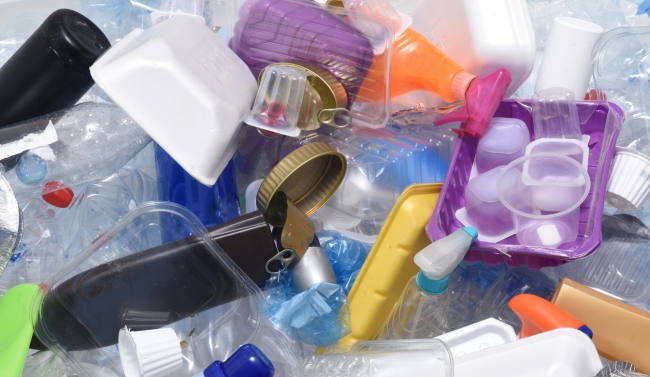4 minute read • published in partnership with Irwin Mitchell
Insight: Extended Producer Responsibility and impacts for producers of packaging waste
Extended Producer Responsibility (EPR) is a new UK legislation regime that came into force on 1 January 2023 and has the effect of replacing the current Producer Responsibility Packaging Waste Regulations by way of a phased implementation of the new regime. Jill Crawford from Irwin Mitchell explains what producers of packaging waste need to know.
The new EPR is essentially based on environment policy that requires producers to pay the full costs of dealing with the waste they produce from when it is placed onto the market, through to the end of its life as opposed to the burden falling on the tax payer. It also plays a part in the UK government’s strategy in meeting net zero carbon emissions by 2050.
The new EPR regime aims to deliver a more circular economy and achieve a reduction in the environmental impact of packaging through its life cycle. It looks to do this by reducing the amount of packaging waste that goes to landfill; increasing the amount of recyclable waste being processed into high quality secondary resources; and signposting producers towards using material with a high recycling content. It also relies to an extent on the polluter pays principle (see Environment Act) in that whoever produces the pollution, should pay for the costs of the impact it can have on the environment as well as on people’s health.

The new EPR is essentially based on environment policy that requires producers to pay the full costs of dealing with the waste / Picture: Getty/iStock
So which businesses will be caught by the new regime?
Basically, all UK businesses that have an annual turnover of at least £1m, are responsible for a minimum of 25 tonnes of packaging per annum, and undertake the following packaging activities:
• Supplies packaged goods to the UK market under its own brand
• Packages goods for another UK organisation
• Uses transit packaging to protect goods during transport so they can be sold to UK consumers
• Imports products in packaging
• Owns an online marketplace that allows third parties based outside the UK to sell packaged products or empty packaging through it
• Hires or loans out reusable packaging to UK third parties
• Sells empty packaging
Here is a list of some of the actions that companies who fall under the new legislation will need to take note of (although different obligations apply dependent upon if a company is defined under the Regulations as a ‘small’ or ‘large’ business).
• Collect and submit data on the packaging it handles and supplies (applies to both small and large companies)
• Pay a waste management fee
• Buy packaging waste recycling notes (PRNs) or packaging waste export recycling notes (PERNs) to meet recycling obligations
• Submit information about where packaging has been sold, hired, loaned, gifted, or discarded referred to as
• Register for the EPR packaging online service
Other changes worthy of note
Full Net Cost recovery – the full cost of collection, sorting, recycling, and disposal of household packaging waste will be covered by producers rather than the taxpayer. The Government will produce a calculator to give examples of what these increased costs would mean for businesses.
Household Packaging – the extension for covering kerbside recycling under Full Net Cost will apply to household packaging waste only. The definition of household packaging is packaging which is generated by households or similar, this is often the primary or secondary packaging.
Single Point of Compliance – The PRN system will be modified and will have a single point of compliance, placing the cost obligation onto brands, distributors and importers. Where the current Packaging Waste Regulations focus on shared produced responsibility, where everyone in the chain picks up a certain percentage of obligation these new regulations put the full costs onto a smaller group of producers who most influence packaging choices.
Modulated fees – from 2025, producers will pay fees based on the environmental / recycling qualities of their products; for example, how widely recycled / recyclable a material is. This will require more in-depth data on packaging materials than is reported in the system.
More detailed and frequent data reporting – to support the modulated fees mentioned above more in-depth reporting of recyclability of packaging will be required. Data reporting will move from an annual to a bi-annual reporting structure (April and October). New details which businesses will be asked to report include:
• Packaging Function – what is the packaging used for? Is it primary, secondary, or tertiary?
• Waste stream – what waste stream is it likely the packaging will end up in? Is it household or business?
• Packaging Components – this follows the Plastic Packaging Tax example where packaging will need to be declared by its individual components. For example, a plastic bottle would need to have the lid, label and bottles all declared separately
• Recycling Disruptors – such as metal components, carbon black colouring, UV inks and varnishes
• Recycling Enablers – such as detectable inks that allow for enhanced sorting and reprocessing
• Format of packaging – what type of packaging is it? For example, a box, bottles, bag or jar
• Colour of material
It is anticipated by many that the cost to business will rise substantially, from a previous cost of £200-300m to around £2.7bn a year. This equates to costs for companies increasing by 10 to 30 times more, however, it’s estimated that coupled with single point compliance, these costs could be much higher for some industry sectors.
For more information, contact the Irwin Mitchell Environment Team.
